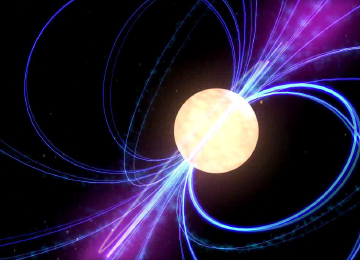ABSTRACT
The purpose of this project was to investigate timing data of the magnetar Swift J1822.3-1606, following its 2011 outburst, in order to determine the evolution of the upper bound of photon energy in the pulsed emission during and after the outburst. We analyzed RXTE observations and used a Fourier transform based method for signal detection. Our result is that following the outburst the energy upper bound of the pulsed emission decays from 9.0 keV to 3.3 keV in about 84 days, after which we did not detect pulsations. Possible future work includes using different methods for signal detection, modeling the pulsed emission mechanism based on its decay and comparing the behaviour of Swift J1822.3-1606 with other similar sources.
Motivation
Magnetars are neutron stars whose emission are powered by their very high magnetic fields of about 1014 G. The extreme conditions on magnetars make their study interesting. Swift J1822.3-1606 is a magnetar (Livingstone et al., 2011) that was detected in 2011 (Cummings et al., 2011) during an outburst. This project was aimed to analyze how the pulsed emission energy levels of Swift J1822.3-1606 change after the 2011 outburst.
Observations
We used 33 observations from the Rossi X-Ray Timing Explorer (RXTE) mission’s Proportional Counter Array (PCA) instrument (see Figure 1). The observations are from a 135 day period. The observation data consists of photon arrival times and energy levels.

.jpg)